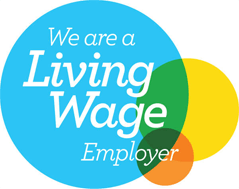Equal Pay Day 2015: Mind the Gap

9 November 2015 is Equal Pay Day – we’ve got a long way to go.
Although the gender pay gap is gradually decreasing and women under the age of 30 tend to earn more than men, this gender gap widens later when women take time out to have children. For men and women aged 40 and over, men earn an average of 13.6% more than women. At 50, the difference increases to 17.9%.
For those in senior positions there is an even larger disparity of appropriately 20%. For higher earning executives, salary difference alone is likely to run into five-figure sums each year, particularly if bonuses are paid.
The Government has finished consulting about the extent to which large private sector employers, those with 250 employees or more, should have to report publicly on how much they pay their staff.
This issue was placed on the back burner when the Equality Act came into force on 1 October 2010. Although the Equality Act 2010 envisaged new regulations being introduced on pay reporting, the Small Business, Enterprise and Employment Act 2015 did not hit the statute books until 26 March 2015.
This means that those facing the brunt of pay discrimination have had to make do with minimal and ineffective protection.
Think Act Report
The Government launched ”Think Act Report” in September 2011. Based on principles agreed with businesses, unions and the voluntary sector, this set out a voluntary framework for gender equality reporting available to all organisations, especially those with 150 or more employees.
The framework includes reporting of statistics such as:
- company statistics for gender representation in different roles and salary levels
- promotion and flexible working rates
- gender distribution across the organisation’s occupational groups
- pay and reward gaps between men and women
Whilst the uptake was reasonable, only 4 of the 200 employers who signed up printed these statistics. A cynical view could be that the remaining 196 realised they had something to hide.
Equal Pay Questionnaires
It was extremely disappointing that on 6 April 2014 the coalition government withdrew the formal questionnaire procedure for those seeking evidence of workplace inequality.
Equality Act Questionnaires provided workers with the ability to quiz their employers about their workforce’s pay. This enabled women to find out how much their male counterparts were earning and the reason for any disparities.
Employment Tribunals were able to draw adverse inferences against reticent employers who refused to answer this Equal Pay Questionnaire.
Equal Pay Audits
In the case of Equal Pay claims issued after 1 October 2014, the Employment Tribunal has the power to order employers who have been found guilty of paying unequal pay, to carry out Equal Pay Audits. The Audit would report on “gender pay information”, identify any differences in pay and the reasons for those differences, and explain what the employer intends to do to remedy any discrimination.
This power relies on an employee having brought and won a claim in the first place. Equal Pay litigation claims are often settled making the threat of an Equal Pay Audit extremely unlikely.
What reporting is needed?
Mandatory reporting is essential in order to obtain wider statistics which identify trends.
Employers have historically defended Equal Pay cases with a Material Factor defence such as Market Forces. Following a Court of Appeal decision in 2011, this defence has become much more powerful. This will normally only be rejected where it is deliberately fabricated.
To overcome this and to ensure that the Employment Tribunal scrutinises the employer’s defence, the employee needs to demonstrate a trend in pay discrimination. For example, a group of predominantly female employees being paid less than a group of predominantly male employees. This is precisely where Gender Pay Gap Reporting could come to the rescue. It would identify those trends, bringing the employer to fully account for any discrepancies.
But will the government fully appreciate the potential and the “Gap” that Gender Pay Gap Reporting needs to fill? The Prime Minister, David Cameron has recently suggested that employers could be required to not only report the overall pay gap, but to break this down by grade and job type.
The devil is in the detail. Unless these Regulations are specific enough to ensure that the mandatory reports not only identify these trends but also which employees are affected, women will be left with useless information which only provides lip service to promoting Equal Pay.
Matthew Grant is a specialist employment lawyer based in our Brighton office and Eastbourne office. Contact Matthew today on 01273609911, or email info@ms-solicitors.co.uk to find out how we can help you with Equal Pay claims and Discrimination in the Workplace.


